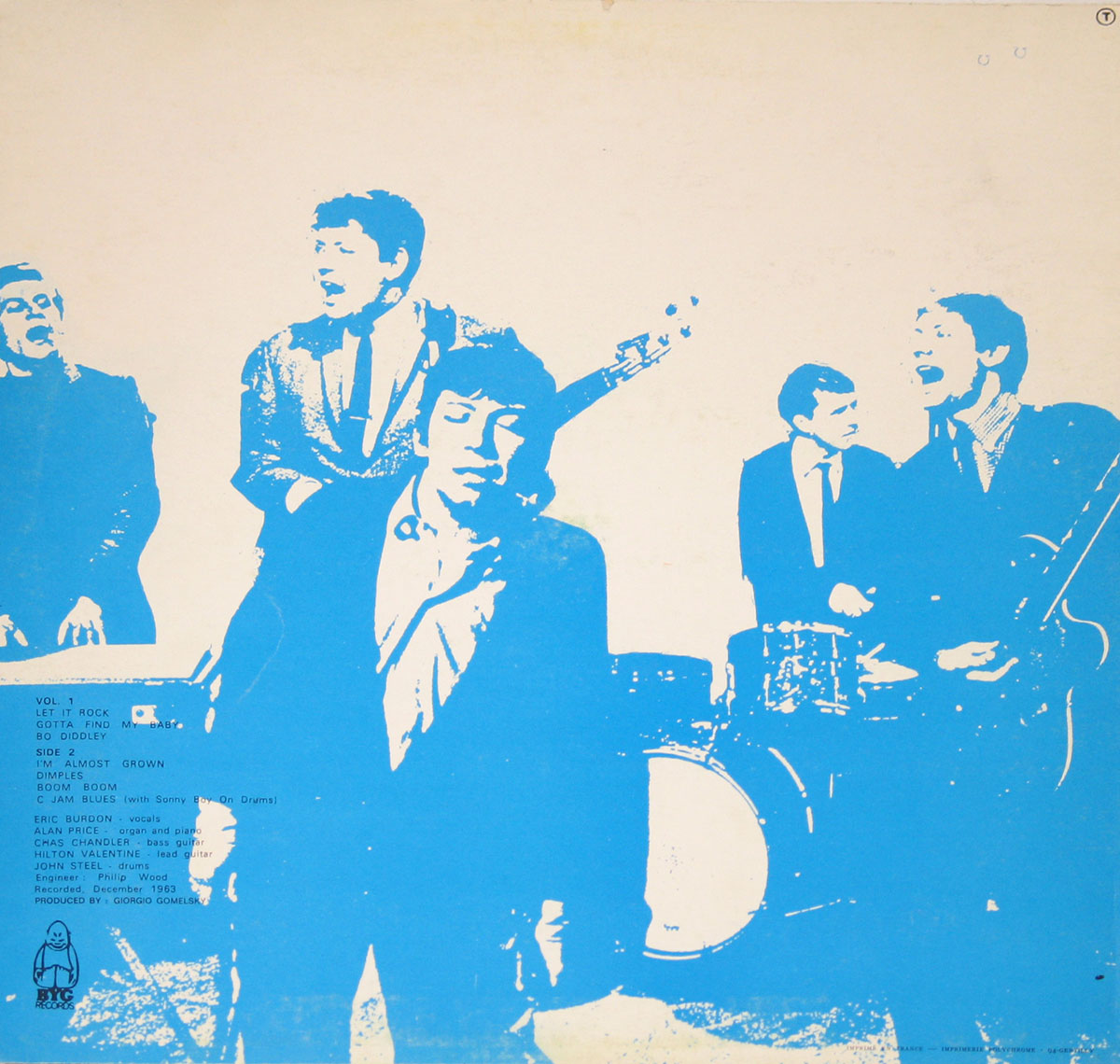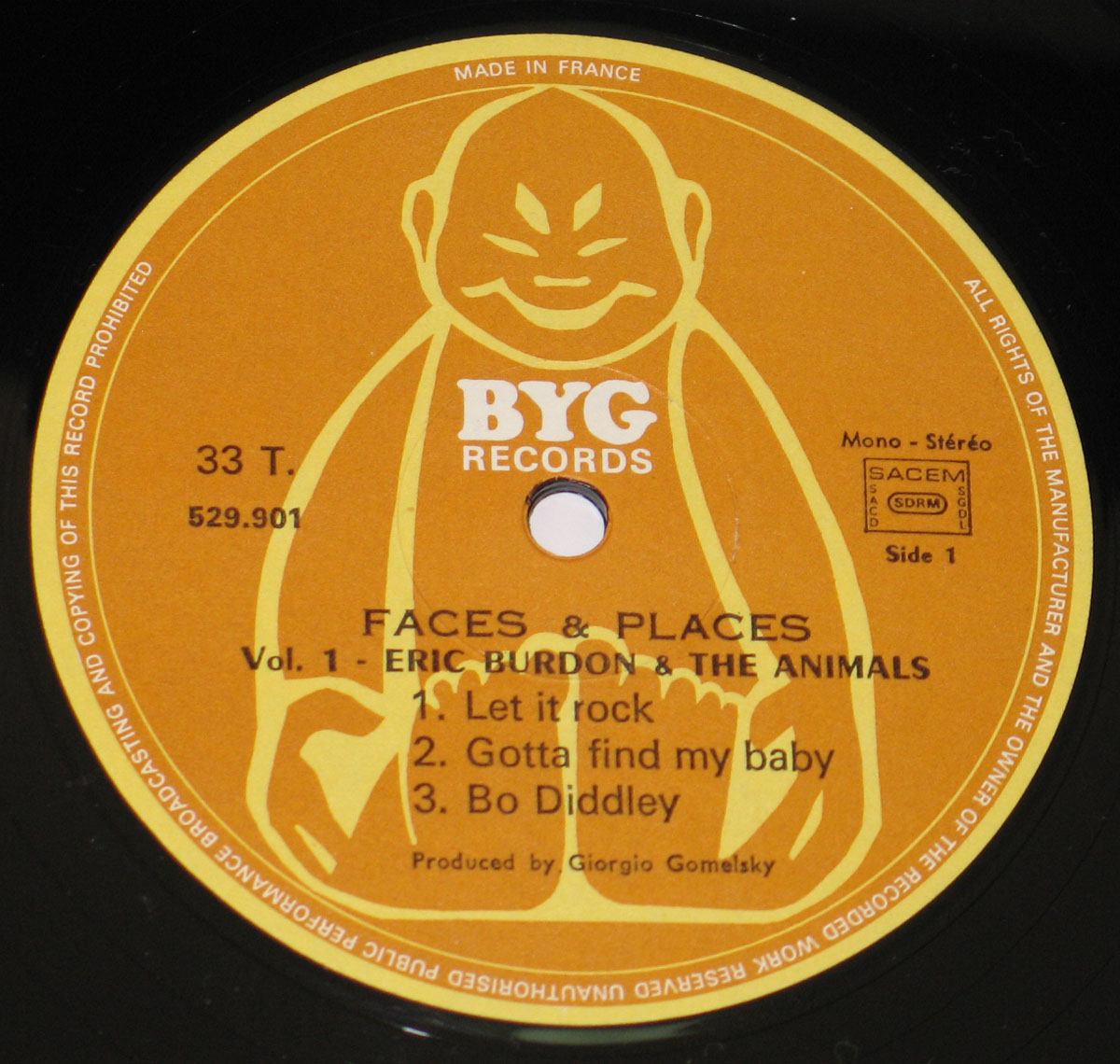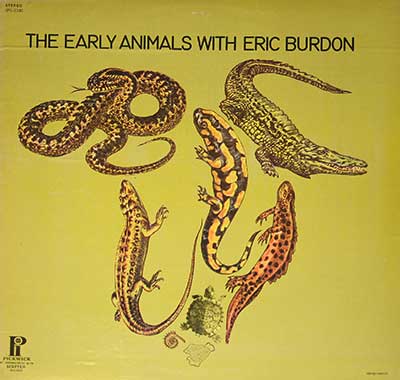"Faces & Places Vol. 1" (1965) Album Description:
The Raw Pulse of Early British R&B
Some albums smell like cigarette smoke and cheap beer even before you drop the needle — “Faces & Places Vol. 1” is one of them. Recorded live in 1963, before British rhythm & blues went respectable, it captures The Animals as they truly were: hungry, loud, and still half-feral from the clubs of Newcastle. You can almost hear the walls sweating.
Before the World Was Listening
By late ’63, London was only just beginning to notice the northern R&B boom. The Beatles had cracked the code, but Eric Burdon and his pack were prowling a different alley — raw American blues, not polished pop. Club A’Gogo was their den, a cramped furnace where Burdon’s rasp met Alan Price’s swirling organ in front of a crowd that never quite decided whether to dance or duck for cover. Producer Giorgio Gomelsky, always sniffing out sparks, pressed “record” and caught lightning in mono.
Captured Chaos
“Faces & Places” wasn’t some planned debut — it was closer to a bootleg blessed by chaos. These takes show the band before managers, stylists, or fame. There’s no gloss, only adrenaline and instinct. Burdon shouts more than he sings, Hilton Valentine’s guitar scrapes like steel on brick, and Price’s organ grinds behind it all like a barroom sermon in overdrive.
The Sound of Grit
Listen to “Let It Rock” or “Boom Boom” and you’ll hear them teetering between reverence and rebellion — young Brits trying to channel Bo Diddley and John Lee Hooker with nothing but nerve. “Dimples” staggers forward with that off-kilter swing born in sweat-stained clubs, while “C Jam Blues,” with Sonny Boy Williamson dropping by on drums, unravels gloriously before pulling itself together again. Imperfect, yes — and utterly alive.
Among Their Peers
In a year when the Yardbirds chased precision and The Stones cultivated their calculated sleaze, The Animals were the wild card — too rough to polish, too good to ignore. Compared to those peers, this record sounds prehistoric, a fossil humming with voltage. But that’s the appeal: no filters, no safety net, just five blokes tumbling headlong into American blues and leaving a trail of broken strings.
The French Connection
By the time BYG Records issued this French pressing in 1965, The Animals had already broken big with “House of the Rising Sun.” The group immortalized here no longer existed, yet French fans received a time capsule — a snapshot of Britain’s R&B underground before fame came knocking. The gatefold sleeve felt almost archival, a love letter to the smoke and sweat that birthed it.
Legacy and Reflection
Critics barely looked up when it appeared, which may have been a blessing. It’s too raw for polite review columns. Today collectors recognize it as an unguarded glimpse of the band’s formative power. Burdon never sounded this young again, and the band never this reckless.
Drop the needle and you’re back in ’63: the amps hum, the beer’s flat, and five kids from Newcastle are trying to make American blues their own. It’s not perfect — it’s alive. And that’s rarer than mint vinyl.




